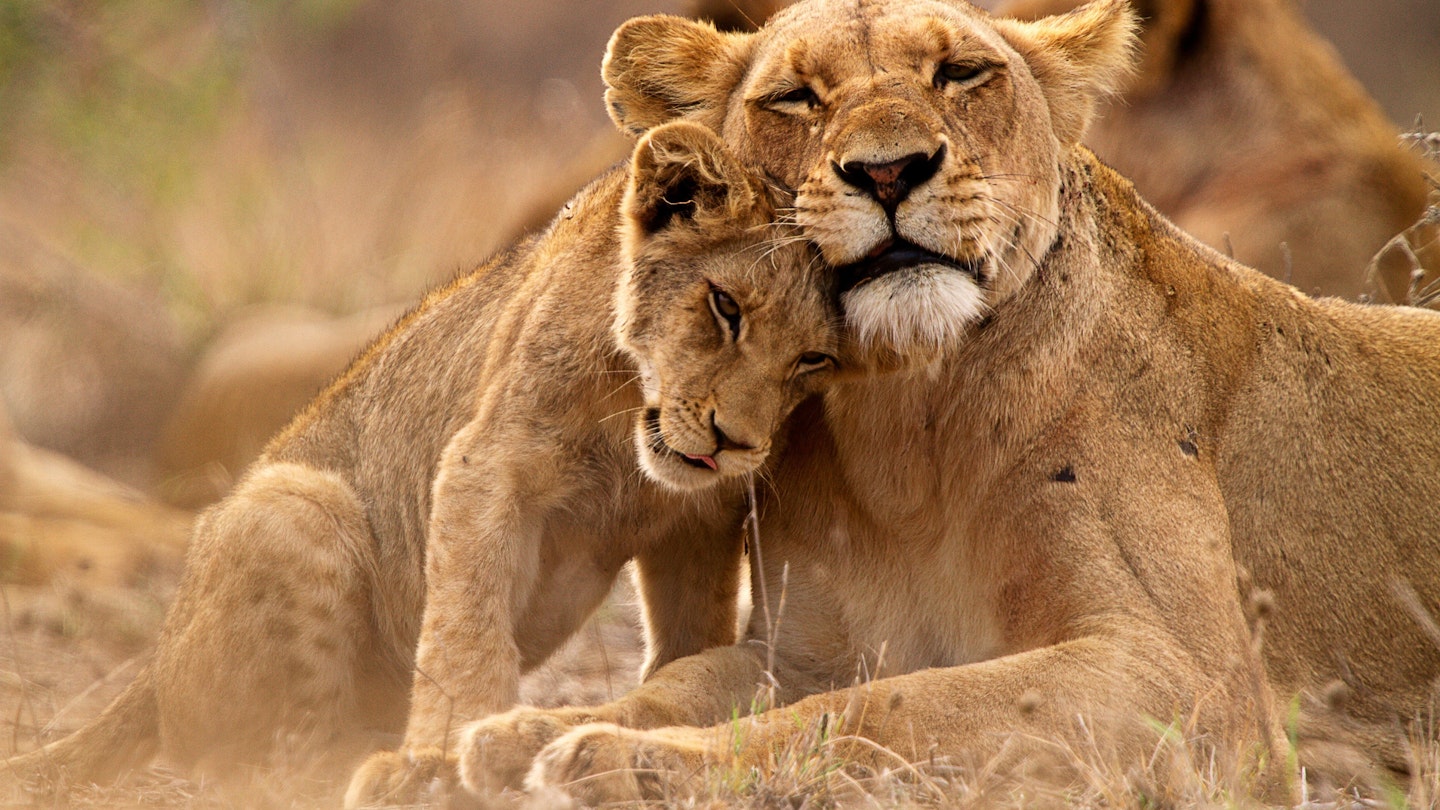Understanding Lions: Apex Predators of Africa
Few experiences in Africa live longer in memory than the first time you see a lion.
Lithe and ferocious, lions are without rival as Africa’s apex predator and carry an aura of impending violence. The epitome of wild Africa, they are also the most sought-after highlight on any safari in East Africa or Southern Africa for their unique combination of grace and grandeur.
Africa’s Biggest Cat
Second in size among felines only to the tiger, lions are easily Africa’s largest cat species. Males can exceed 2.5 meters in length, reaching 3.5 meters if you include the tail. The heaviest wild male lion recorded weighed in at a remarkable 272 kg. Females typically weigh between 110 kg and 168 kg. Notably, lions can consume up to 25% of their body weight in a single feeding session.
Female lions can live up to 18 years in the wild, while males usually live up to 16 years, but many rarely exceed 12. However, in captivity, they can thrive for up to 27 years.
A Social Beast
Among the 38 species of wild cats, lions are unique for their social structures. They live in prides that can consist of more than 30 individuals, although many prides are smaller, especially where human pressures are high or prey is scarce.
A multi-generational sisterhood of lionesses forms the core of most prides. Females are likely to remain with their sisters and mothers throughout their lives, collaborating to raise the pride’s cubs and defend their territory. Litter sizes range from two to four cubs, although as many as seven have been reported. Cubs, blind at birth, only open their eyes approximately ten days later and stay hidden until they are about eight weeks old.
What Lions Eat
Lions are opportunistic feeders, consuming a diverse range of animals from springhares to elephants. Their preferred prey fluctuates by region, including zebra, warthog, and wildebeest in their diets. Notably, some pride of lions has adapted to hunt seals along Namibia’s northern coast.
Despite lion’s impressive hunting skills, they possess a relatively low success rate, with recorded figures ranging from 15% to 38.5%. Furthermore, they commonly scavenge a significant portion of their sustenance.
King of the Jungle?
Despite the name, lions are not the kings of the jungle. They are primarily found in savannah plains or open woodlands and can adapt to various habitats, including Kenya’s dense woodlands and the semi-arid environments of Botswana’s Kalahari.
The largest lion populations reside in East and Southern Africa, with estimates suggesting that half of Africa’s lions are in Tanzania. Additionally, lion populations exist in regions like the Gir Forest in Gujarat, India, and in parts of West Africa, where the lion faces critical endangerment.
The Best Places to See Lions on Safari
Botswana
Northern Botswana boasts exceptional lion-watching opportunities, particularly in Moremi Game Reserve and the Okavango Delta, as well as Chobe National Park.
Kenya
Kenya is home to around 2000 lions, with sightings frequent in the Masai Mara Game Reserve and surrounding areas, including Amboseli and Tsavo national parks.
Namibia
Although lion sightings in Namibia can be scarce, Etosha National Park offers significant opportunities, along with quieter alternatives in Khaudum National Park.
South Africa
Many private reserves in South Africa have reintroduced lions. Kruger National Park remains one of the premier locations for lion sightings.
Tanzania
This country is renowned for its prime lion-viewing locations, such as Serengeti National Park and Ngorongoro Crater.
Zambia
Belying its underrated status, Zambia’s South Luangwa National Park delivers excellent lion-watching experiences, alongside North Luangwa and Kafue national parks.
Zimbabwe
Hwange National Park is among Africa’s finest for seeing lions, complemented by Mana Pools, where you can observe these majestic creatures during walking safaris.
Lions in Peril?
Unfortunately, there are now fewer lions in Africa than there are rhinos or elephants. Recent estimates suggest only about 22,509 lions remain on the continent, with lions having disappeared from 95% of their former habitats. Just 40% of the remaining lions live within protected areas, and only eight countries are believed to hold over 500 adult lions.
The International Union for the Conservation of Nature lists the lion as Vulnerable, underscoring the urgent need for conservation efforts to ensure the survival of this iconic species.





